Electromagnetic monitoring of semiconductor ageing (EMSA)
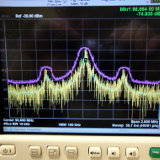
Funder: EPSRC
Date: September 2013 - February 2014
Web pages: York Research Database
My roles: Researcher
Semiconductor devices age over time leading to a gradual degradation in their performance. Eventually these changes can lead to a malfunction in the electronics circuits in which the devices are embedded. The ability to monitor the through life ageing of semiconductor devices in a system is therefore important for providing information on the system’s “health” and thus the risk of system failure. Such monitoring can be built into the electronic circuits, but this is costly. This project demonstrated that it is feasible to monitoring age related performance effects non-invasively by measuring how the emission spectrum or re-emissions spectrum changes over time.
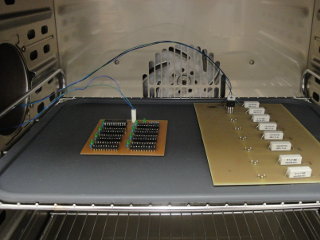
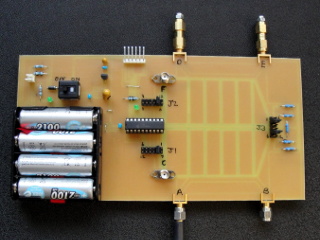
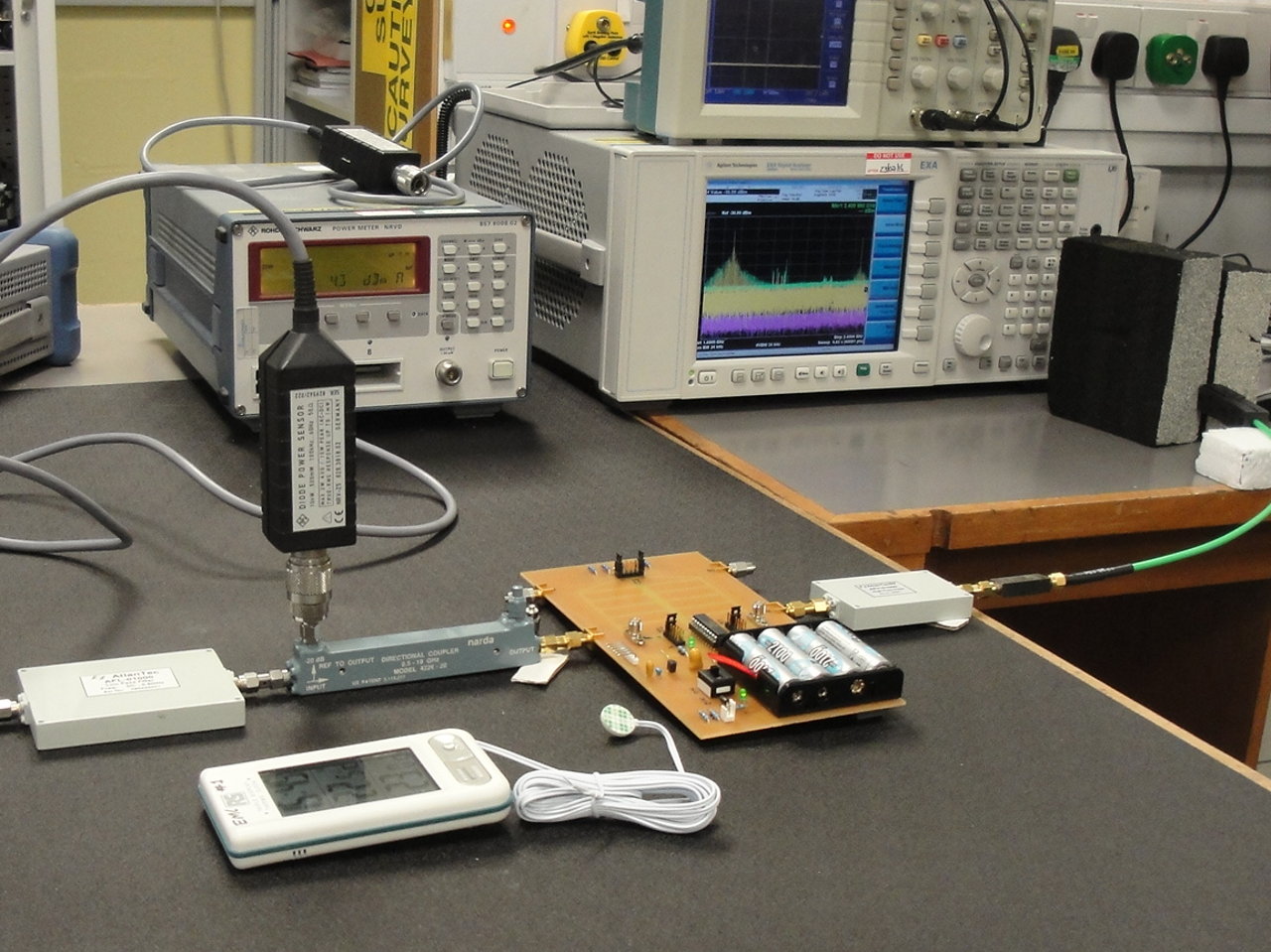
This project was funded by the EPSRC Centre for Innovative Manufacturing in Through-life Engineering Services and was a collaboration between the AEG at the University of York and De Montfort University.
The characteristics of devices in a circuit determine the shape of the digital waveforms propagating along traces on PCBs and therefore the electromagnetic emission spectrum of the circuit. Furthermore, earlier work in the AEG had demonstrated that the re-emission spectrum of digital electronic system when illuminated by radio-frequency electromagetic fields carried information about the interaction of the field with the nonlinear devices in the system (Flintoft et al., 2003). We therefore postulated that ageing effects may be observed in these spectra.
To verfiy this postulate a number of simple electronic circuits were constructed, each based on a single semiconductor device. The emission and re-emission spectrum of the circuit was measured before and after the devices where aged. The image gallery above shows one of these circuits - a simple microcontroller circuit transmitting a digital signal around a loop. A number of nominally identical microcontrollers were used, some as unaged controls, while others were subjected to one or two cycles of accelerated ageing at high temperature. The graphs below show the emission spectrum of the microcontroller circuit with the same microcontrolled chip before and after ageing.
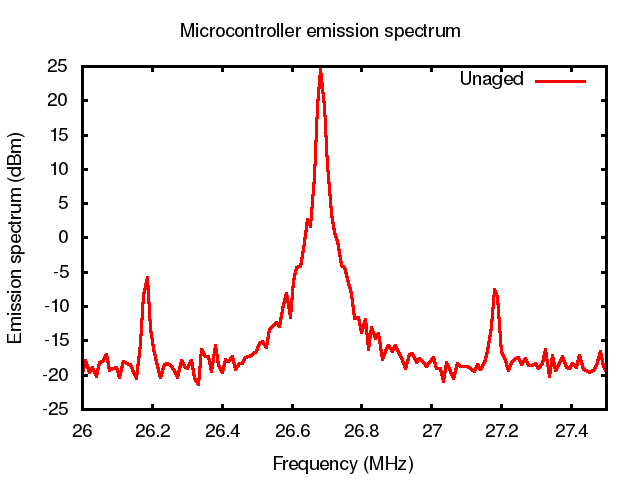 Evolution of the emission spectrum near 27 MHz of a microcontroller due to two rounds of high temperature accelerated ageing
Evolution of the emission spectrum near 27 MHz of a microcontroller due to two rounds of high temperature accelerated ageing
Full details of the project can be found in (Duffy et al., 2014), (Dawson et al., 2014) and (Dawson et al., 2014).
References
- Dawson, J.F., Flintoft, I.D., Duffy, A.P., Marvin, A.C. and Robinson, M.P., 2014. Effect of high temperature ageing on electromagnetic emissions from a PIC microcontroller. In: 2014 International Symposium on Electromagnetic Compatibility (EMC EUROPE 2014). Gothenburg, Sweden: IEEE, pp.1139–1143.
This paper describes the effect of high temperature ageing on the electromagnetic emissions of a number of PIC microcontrollers. The aged devices show a measureable shift in the frequency of emissions. Shift in the voltage-current characteristics of the device output pins has also been observed.
@inproceedings{Dawson2014a, issn = {2325-0356}, booktitle = {2014 International Symposium on Electromagnetic Compatibility (EMC EUROPE 2014)}, month = {1-4 September}, publisher = {IEEE}, address = {Gothenburg, Sweden}, author = {Dawson, J. F. and Flintoft, I. D. and Duffy, A. P. and Marvin, A. C. and Robinson, M. P.}, title = {Effect of high temperature ageing on electromagnetic emissions from a PIC microcontroller}, year = {2014}, pages = {1139--1143}, doi = {10.1109/EMCEurope.2014.6931074}, file = {:pdfs/EMCE2014-Dawson-1139.pdf:PDF}, isbn = {9781479932252}, keywords = {ageing, microcontroller, radiated emissions}, owner = {idf1}, timestamp = {2016.10.12} } - Duffy, A.P., Dawson, J.F., Flintoft, I.D. and Marvin, A.C., 2014. Electromagnetic monitoring of semiconductor ageing. Procedia CIRP, [online] 22, pp.98–102.
This paper reports on the outcomes of the project “Electromagnetic Monitoring of Semiconductor Ageing” funded through the EPSRC Centre for Innovative Manufacturing in Through-life Engineering Services. The basis of the feasibility study reported in this paper is that all active devices exhibit non-linear behaviour and the behaviour of those devices will change as they age. As a result, the radiation or re-radiation of intermodulation products will change as the device ages. The goal of the project is to verify that this change in non-linear behaviour could be identified in a way that does not require modification of existing circuitry, thus allowing through-life and non-destructive monitoring of devices for signs of early deterioration. Results obtained from this work have been very encouraging and have set the scene for further development of the techniques to include degradation fingerprinting and system health monitoring.
@article{Duffy2014, author = {Duffy, A.P. and Dawson, J.F. and Flintoft, I.D. and Marvin, A.C.}, title = {Electromagnetic monitoring of semiconductor ageing}, journal = {Procedia CIRP}, year = {2014}, volume = {22}, pages = {98--102}, issn = {2212-8271}, note = {© Published by Elsevier BV 2014. This content is made available by the publisher under a Creative Commons CC BY-NC-ND Licence. Issue title: Proceedings of the 3rd International Conference in Through-life Engineering Services}, doi = {10.1016/j.procir.2014.07.130}, file = {:pdfs/PCIRP22-Duffy-98.pdf:PDF}, keywords = {Intermodulation, electromagnetic compatibility, semiconductor ageing, failure prediction, through life monitoring}, owner = {idf1}, postprint = {https://pure.york.ac.uk/portal/files/43326095/Duffy2014.pdf}, timestamp = {2016.10.12}, url = {http://www.sciencedirect.com/science/article/pii/S2212827114009433} } - Dawson, J.F., Flintoft, I.D., Duffy, A.P., Marvin, A.C. and Robinson, M.P., 2014. Electromagnetic monitoring of semiconductor ageing. In: 2nd Annual Symposium on Tackling No-Fault Found in Maintenance Engineering (NFF2014). Shrivenham, UK.
@conference{Dawson2014c, author = {Dawson, J. F. and Flintoft, I. D. and Duffy, A. P. and Marvin, A. C. and Robinson, M. P.}, title = {Electromagnetic monitoring of semiconductor ageing}, booktitle = {2nd Annual Symposium on Tackling No-Fault Found in Maintenance Engineering (NFF2014)}, year = {2014}, address = {Shrivenham, UK}, month = {28 May}, owner = {idf1}, timestamp = {2016.10.12} } - Flintoft, I.D., Marvin, A.C., Robinson, M.P., Fischer, K. and Rowell, A.J., 2003. The re-emission spectrum of digital hardware subjected to EMI. IEEE Transactions on Electromagnetic Compatibility, 45(4), pp.576–585.
The emission spectrum of digital hardware under the influence of external electromagnetic interference is shown to contain information about the interaction of the incident energy with the digital circuits in the system. The generation mechanism of the re-emission spectrum is reviewed, describing how nonlinear effects may be a precursor to the failure of the equipment under test. Measurements on a simple circuit are used to demonstrate how the characteristics of the re-emission spectrum may be correlated with changes to the digital waveform within the circuit. The technique is also applied to a piece of complex digital hardware where similar, though more subtle, effects can be measured. It is shown that the re-emission spectrum can be used to detect the interaction of the interference with the digital devices at a level well below that which is able to cause static failures in the circuits. The utility of the technique as a diagnostic tool for immunity testing of digital hardware, by identifying which subsystems are being affected by external interference, is also demonstrated.
@article{Flintoft2003, author = {Flintoft, I. D. and Marvin, A. C. and Robinson, M. P. and Fischer, K. and Rowell, A. J}, title = {The re-emission spectrum of digital hardware subjected to EMI}, journal = {IEEE Transactions on Electromagnetic Compatibility}, year = {2003}, volume = {45}, number = {4}, pages = {576--585}, month = nov, issn = {0018-9375}, note = {Winner of IEEE Transactions on Electromagnetic Compatibility Best Paper Award 2003/2004}, doi = {10.1109/TEMC.2003.819058}, file = {:pdfs/TEMC45-Flintoft-576.pdf:PDF}, keywords = {digital circuits;electromagnetic compatibility;radiofrequency interference;radiofrequency spectra;timing jitter;waveform analysis;complex hardware;cross-modulation products;diagnostic tool;digital circuits;digital hardware;digital waveform;equipment failure;external electromagnetic interference;immunity testing;incident energy interaction;jitter;nonlinear effects;radio frequency interference;reemission spectrum;static failures;timing delay;Circuit testing;Digital circuits;Electromagnetic interference;Electromagnetic measurements;Hardware;Immunity testing;Propagation delay;Pulse measurements;Radiofrequency identification;Radiofrequency interference}, owner = {idf1}, postprint = {https://pure.york.ac.uk/portal/files/315022/marvinac1.pdf}, timestamp = {2013.09.02} }